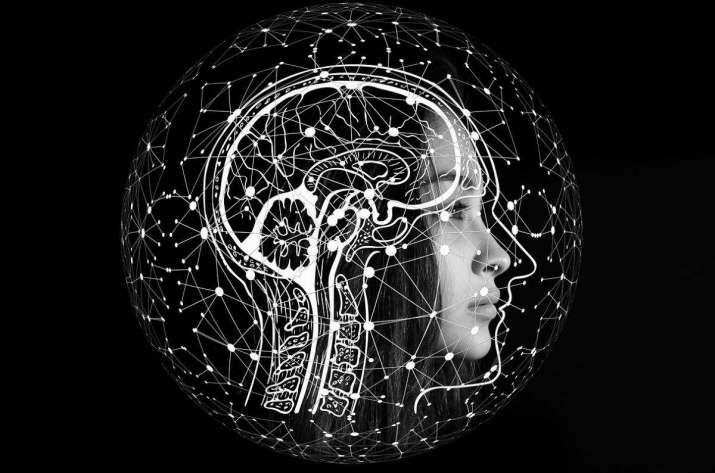
Researching artificial intelligence (AI) from a Buddhist perspective is resulting in an interesting new thread of inquiry. It can be said that informatics represents the peak of human cognition, where the state of the art in philosophy, logic, mathematics, programming, and engineering converge to deliver scientific and technical advances. This work represents not only a science in its own right, but also helps to create the critical substrate and infrastructure necessary for progress in other fields of human knowledge—including physical and materials sciences.
Buddhist thinking has its roots in the so-called Nalanda tradition. This tradition originated in India and takes its name from Nalanda University. Founded in the fifth century, Nalanda was one of the first universities in the world. The Buddhist teachings stemming from the university also represent an apex in the evolution of human thought, both in terms of cognition—matters concerning the mind—as well as the physical and social spheres, with yogic practices and the organization of the community or sangha.
One of the essential aspects of AI development is knowledge representation (KR). KR is a vast subject, ranging from cognition to epistemology. Formally it consists of methods and techniques for the representation of logic into computable structures for the purpose of designing digital information systems. However, in a broad sense it also relates to how humans conceptualize, acquire, memorize, and use various types of knowledge structures. As such, it is a multifaceted field of study that can draw from ideas and theories from throughout the history of humanity.
A contemporary development for students of KR to examine is intelligent and autonomous software systems. These typically fall under the domain of computer science. Specific contemporary KR techniques and tools that are still applicable to AI today were first formalized and published in technical journals in the 1970s, underscoring the interplay of technology and philosophy.
As such, most of KR as we know it today developed hand in hand with AI. This is particularly true in the field of expert systems, wherein expertise is considered to be a specific type of refined knowledge comparable to a “skill” or skillful means in Buddhist thought. KR in AI primarily serves the purpose of providing computable designations for the logical constructs. This includes naming entities, axioms, and rules to support their explicit codification and enabling computerized functions. KR in computer science evolved through different phases—reflecting respective trends in systems automation—culminating in semantic Web research. Today, the Web has rapidly become an immense publicly accessible knowledge repository. This has brought with it unprecedented challenges for knowledge acquisition and storage. An overarching body of knowledge known as ontology engineering has since come into being essentially based on the core tenets of KR.

Since machine learning has become a central focus of contemporary AI, the attention of developers has slipped away from standard KR, which developed to support what is known as symbolic AI. Instead, AI developers have begun to look more toward embedded logic, where the system logic is not explicitly represented.
In my work as a researcher I try to address these issues with extensive reading, in-depth discussions, and writing.* There is an interesting relationship between KR in AI, and KR in the Nalanda tradition, which is considered the cradle of most Buddhist schools. A seminal article published 30 years ago in a technical AI publication analyzed the logical grammatical morphology of the Sanskrit language. (Briggs 1985) It concluded that Sanskrit’s structure as a natural language offers adequate formalism to support scientific reasoning like no other natural language. More recently, the Indian Institutes of Technology (IITs), where I once served as a visiting scholar, recently announced that they plan to begin teaching Sanskrit as part of their technology curriculum.
It should be noted that Sanskrit is a root language and precursor of other languages in the Nalanda tradition, namely Prakrit, which is reputed to have been spoken at the time of the historical Buddha. According to the Encyclopedia Britannica:
Prakrit from the Sanskrit: prakrta, means “arising from the source, occurring in the source” or original nature. They can be considered as belonging to the same family of languages, and both their grammars, in different ways, define speech forms considered to be correct or standard (referred to as shabda)). Where language components are said to be adorned or purified (samskrta) by adhering to particular grammatical principles, and as such leading to merit, as opposed to and incorrect or nonstandard (apashabda forms) which are corruptions (apabhramsha ‘falling away’) of acceptable correct forms. (Encyclopedia Britannica)
Prakrit languages are considered to be a vernacular form of language that arose from Sanskrit.
In our times, KR techniques and methods are used to design, build, and maintain logical integrity in engineered systems. Just as a grammar is used to support the logical integrity of speech, which is in turn an expression of thought. In Buddhism it is considered good practice to “think correctly” (see Right Mindfulness and Right Intention in the Noble Eightfold Path), and Right Speech must reflect, follow, and naturally adhere to Right Thinking, followed up by Right Action. This brings about a unity of purpose and logical consistency, which is necessary to any kind of accomplishment or realization in spiritual practices, as well as logical integrity, which is necessary to ensure correct system function.
In computer science, ontology engineering is necessary at least to some extent for the development of intelligent systems. This can be seen as a modern extension—applicable to computation—of a long tradition in the forging of intelligent, coherent human minds.
Nagarjuna was reportedly uncertain about the capability to acquire knowledge because of the fallacies and self-contradictory status of all means of acquiring knowledge. When addressing Nagarjuna’s concerns, later philosophers such as Asanga, Vasubandhu, and Dignaga (c. 450 CE) started formalizing the epistemological foundations of Buddhism. This formalization was then followed by Gangesha (late 12th century), the founder of Navya-Nyaya, the main school of Indian logic.
One of the contributions by Dignaga in the Pramana-samuccaya was motivated by the need to establish the means of valid cognition. This motivation was taken up by Dharmakirti (c. 635 CE), and scores of supporting and opposing scholars including Uddyotakara and Kumarila (c. 500 CE). Dharmakirti aimed to defend the views of Dignaga, however he is known to have excelled and eclipsed his teacher. (Bhatt 1997)
The key message for computer scientists is that the main purpose of KR in AI is to identify and make explicit the correct (intended) logical function of a system and to ensure its continuity across the lifecycle. This broad view is necessary to produce any kind of ethical AI and to limit the risk of unintended consequences.
Today we are engaged in creating and leveraging AI. But prior to this, generations of scholars were capturing and representing knowledge, albeit in relation to natural intelligence. At a minimum, we should be aware of this and, where appropriate, seek inspiration in such treasures. The peak of human development as we climb it today in AI is a continuum of earlier foundations.
* Special Issue “Artificial Intelligence Knowledge Representation” (Systems)
** Briggs, Rick. 1985. “Knowledge Representation in Sanskrit and Artificial Intelligence” AI Magazine. Vol. 6 No.1.References Bhatt, S. R. 1997. “Logic and Language in Buddhism.” In: Brian Carr, Indira Mahalingam (eds.), Companion Encyclopedia of Asian Philosophy, London-New York: Routledge.
See more
Now IITs, NITs to prove Sanskrit is scientific language (India Today)
Prakrit Languages (Encyclopedia Britannica)












